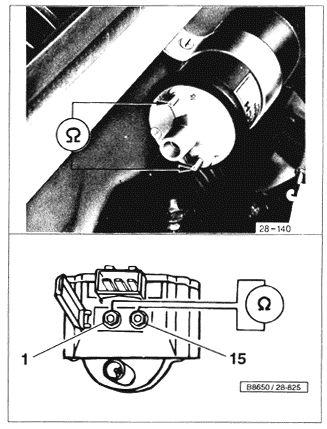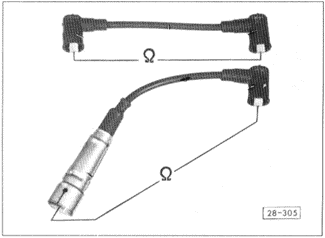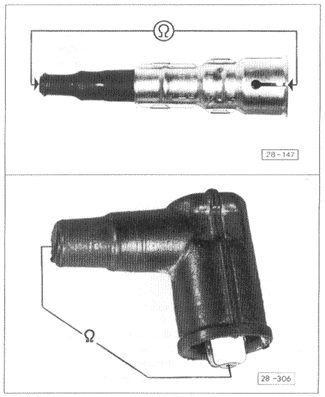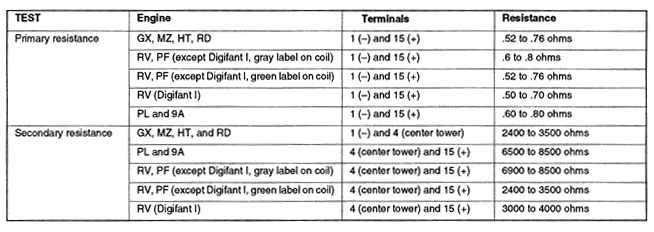3.3 Testing Coil and Spark Plug WiresUse an ohmmeter to test the ignition coil primary and secondary resistance as shown in Fig. 3-1. Resistance values are given in Table c. Replace any coil which has higher primary or secondary resistance.

Table c. Ignition Coil Resistance
To check each spark plug wire, disconnect the ends from the spark plug and from the distributor cap and use an ohmmeter to check resistance as shown in Fig. 3-2. Spark plug wires should have 4600 to 7400 ohms resistance. The coil wire should have 1200 to 2800 ohms resistance.

If the measured resistance is too high, check the wire and the connectors separately, as shown in Fig. 3-3. Also check for corrosion at the connections. Remove the connectors carefully. Twist, then pull. If the metal wire end stays in the connector, the connection is ruined and both connector and wire must be replaced. The resistance of the spark plug connectors should be 4000 to 6000 ohms. The resistance of the suppression connectors which connect to the distributor cap should be 600 to 1400 ohms. The resistance of the wire alone should be nearly zero ohms. Wires or connectors with too much resistance should be replaced. Individual connectors and wires are available from authorized Volkswagen dealers, but may not be stocked by all dealers.

|
